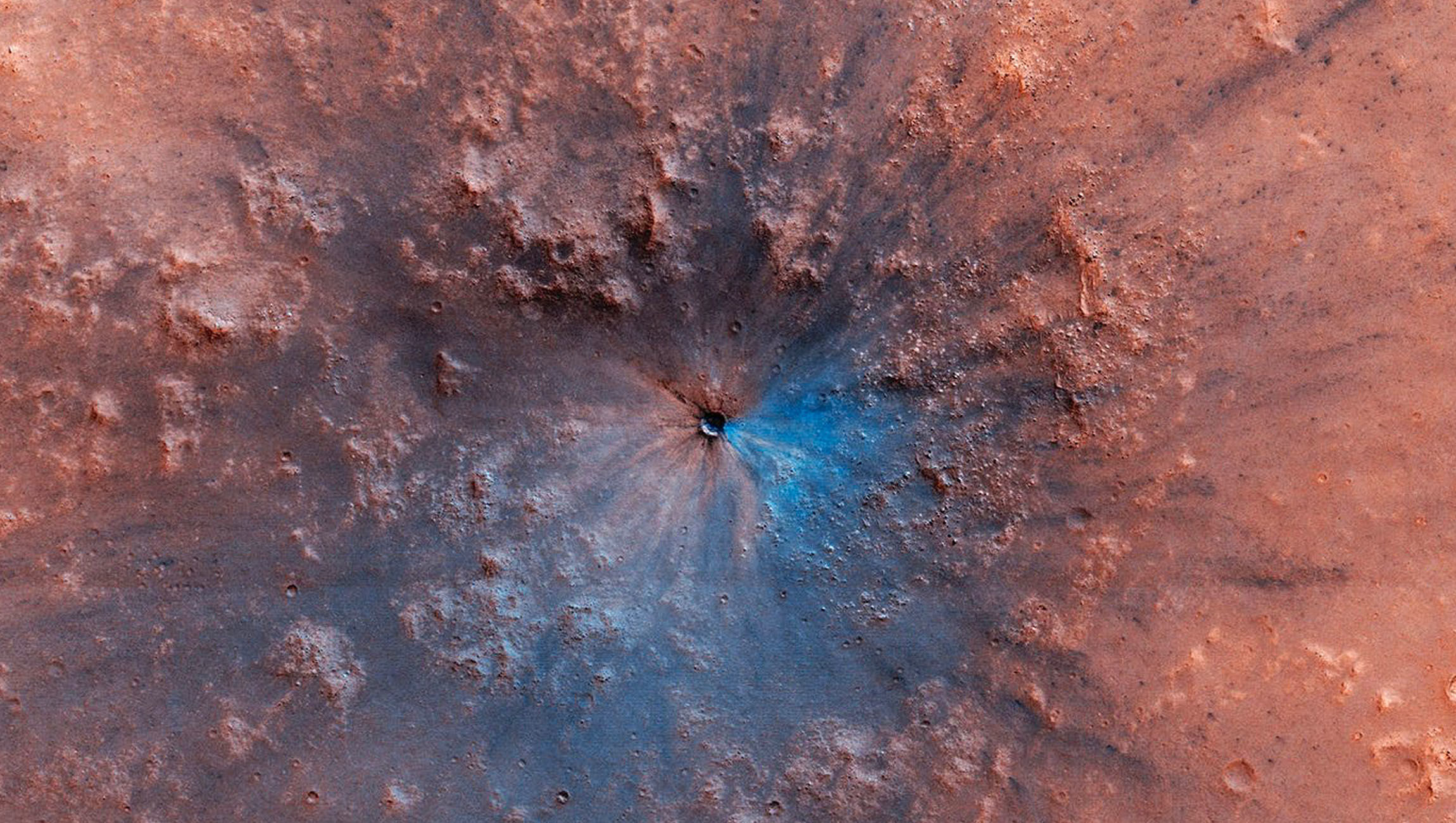Create a free profile to get unlimited access to exclusive videos, sweepstakes, and more!
This mind-blowing Martian crater almost doesn't look real

Between this and the weird formation any Trekkie could swear is the Starfleet symbol, there have been some bizarre things appearing on Mars lately.
NASA’s Mars Reconnaissance Orbiter (MRO), which also caught the accidental Star Trek reference, recently spotted proof that the Red Planet got smashed in the face not too long ago. With its High Resolution Imaging Science Experiment (HiRISE) camera, the spacecraft captured a crater, "formed at most between September 2016 and February 2019" (per the HiRISE Operations Center) in the Valles Marineris region that looks like sci-fi special effects.
The asteroid that researchers believe created this bruise is estimated to have been about 5 feet wide and left a mark about 49 to 53 feet wide. It showed up initially like a smudge, and then as a ginormous black-and-blue mark when it was color-enhanced to show the impact zone.
MRO is used to imaging craters, but this is one of the largest. Just for comparison, over 200 asteroids and comets punch craters in Mars every year, but you rarely see anything even remotely close to this fresh example.
“What makes this stand out is the darker material exposed beneath the reddish dust,” notes a HiRISE press release.
Whatever head-butted Mars probably would have exploded or been eaten away while plummeting through Earth’s atmosphere. Since Mars has next to zero atmosphere, it seems to have survived — not only that, but unlike most of the objects that pummel Mars, it must have been solid enough to stay intact when it crashed. There would have been a scattering of craters from all its pieces if it had broken apart on impact.
Another thing you usually don’t see in hi-res is the impact wave, or that shadowy area where reddish dust shifted off the surface and exposed what is believed to be basaltic rock. The bluish splotches are possibly Martian ice. Valles Marineris is near the warmer equator of this freezing planet, but there still could be ice even there.
You can see all the observation details here, from the coordinates of the crash to the local Mars time when the image was taken.
(via Gizmodo)


























